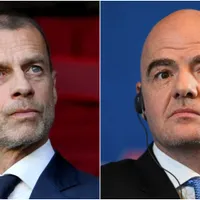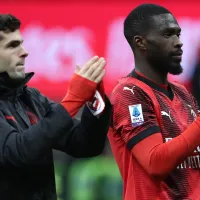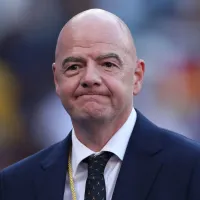We can have an intelligent debate about whether this current version of United States national team represents a “Golden Generation.” There’s time for that discussion.
But whatever we’re calling it, this simply cannot be up for debate: a young team grew up in meaningful ways Friday, looking brave and unfazed, regaining some lost worldwide regard by matching England in a highly anticipated heart-thumper, one that didn’t disappoint, nevermind the 0-0 score line.
There will always be these matches that are so much more than their sum influence on the group standings. This Black Friday biggie, one of those occasions, played out like it. It was tactically calculated, necessarily so from a U.S. side that demonstrated almost no naivete – even if a small allocation of it would be understandable.
Friday’s result may have little impact on the group finish, but certainly provides a super-sized psychological boost to Gregg Berhalter’s squad.
From the English side, it might be an ongoing source of frustration that the Three Lions still have never beaten the United States in a World Cup (Still!). And while the young U.S. roster can take heart in trading punches fearlessly with a heavy favorite, it has to be said that the bottom line still favored the English.
Gareth Southgate’s team sits atop the foursome, in dandy shape to advance in this FIFA World Cup, whereas the United States must beat Iran on Tuesday, the third and final day of group play. Still, Berhalter’s team can take a lot out of this one.
What went right: midfield class and Berhalter’s plan
Personnel-wise, Berhalter made one change for the warm night at the Al Bayt Stadium. Haji Wright, a surprise to make the U.S. roster, took over at striker for Josh Sargent, who was quiet against Wales other than his critical part on a damn big goal. Beyond that, no change at center back, where Walker Zimmerman kept his spot alongside Tim Ream despite the bad challenge that helped Wales stride away with a draw.
Tactically, the U.S. manager made a surprising change. Berhalter has generally been a staunch 4-3-3 advocate, but acquiesced Friday to something a bit more practical: a 4-4-2 with McKennie deployed slightly further back on the right than Christian Pulisic on the left.
The idea seemed to be about making England’s center backs – the soft spot of Southgate’s team – make more of the penetrating passes. It worked, as the Americans were marginally better the first half and surely the aggressor after the break. The English frustration was most palpable around the 60th minute, when the U.S. attack created four corner kicks in quick succession.
As the second half wore one, it was Southgate searching for the influential changes; Berhalter, okay with the unfolding scene, seemed concerned only about managing minutes.
Like the opener against Wales, the U.S. strength was in midfield. That’s no surprise; it’s what we all saw in Berhalter’s selections. Tyler Adams, McKennie and Yunus Musah form a mobile, skillful and spirited central triangle, even if the depth might fall off from there.
Once again, Adams was masterful, probably the brightest figure on either team, timing the tackles well and clever in cleaning up any messes. McKennie was effective again, his personality and drive from midfield causing issues for England. While we can nitpick about his quality in efforts on goal, we can also point out importantly that he was effective for a longer window Friday, his fitness continuing to trend usefully upward.
After 15 minutes where England had the better chances, the U.S. right side took hold. For 20-25 minutes, McKennie, Sergino Dest and Tim Weah combined to create trouble down their right side.
Ream in charge, U.S. defense was steadfast
Not sure what it says about Berhalter that Ream was, again, the best U.S. defender, calm and assured from back to front. Don’t forget, Ream seemed to be a late roster addition, selected only because of injury elsewhere. Zimmerman, meanwhile, did just enough, despite an increasing number of shaky moments.
Goalkeeper Matt Turner, who didn’t play soccer until high school, looked like a man who had been keeping goal in massive matches all his life.
England striker Harry Kane had one good look early (Zimmerman got the moment right on that one, arriving well for the block) and one late, a header wide. Otherwise, not much. Late introductions of Jordan Henderson and Jack Grealish livened up England’s attack, but not quite enough. The United States got its first clean sheet against European competition in the World Cup.
What went wrong: no goals
McKennie and Pulisic had the best U.S. chances. McKennie flashed one over the crossbar from close range from Weah’s cross, while Pulisic banged one off the crossbar. Pulisic, not necessarily ever-present in this one, still managed the look of an attacker who could change fortunes in an instant.
His set piece service was better, even if that part still looks like a work in progress from a team standpoint. However it might happen, they’ll need at least one goal next week against Iran, because a draw will not be enough.
Perhaps Gio Reyna can add some zip to the attack; the volume on that ongoing conversation may be lower, as he got into the match, albeit late. But the coming days will still be full of questions about his limited role to this point.
Photo credit: IMAGO / Fotoarena















